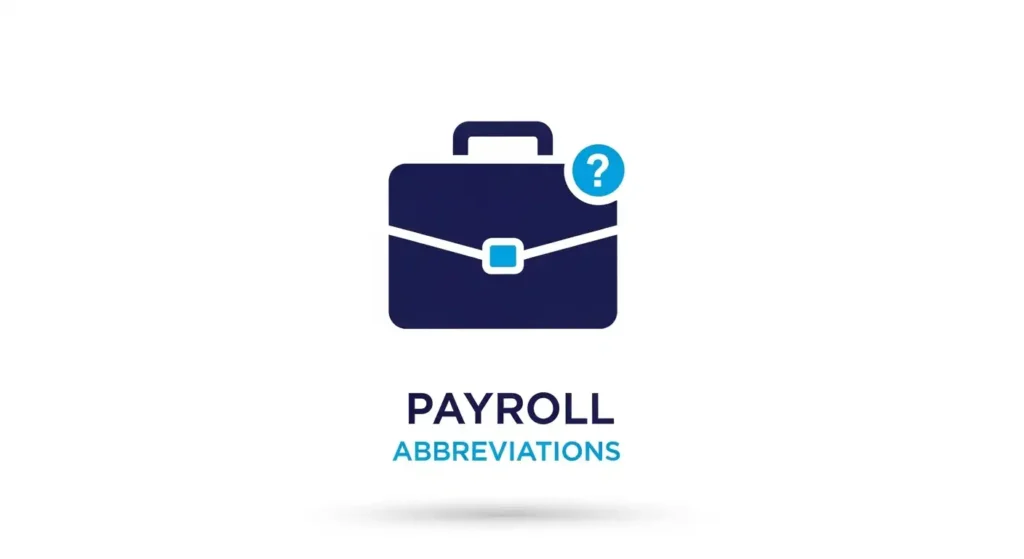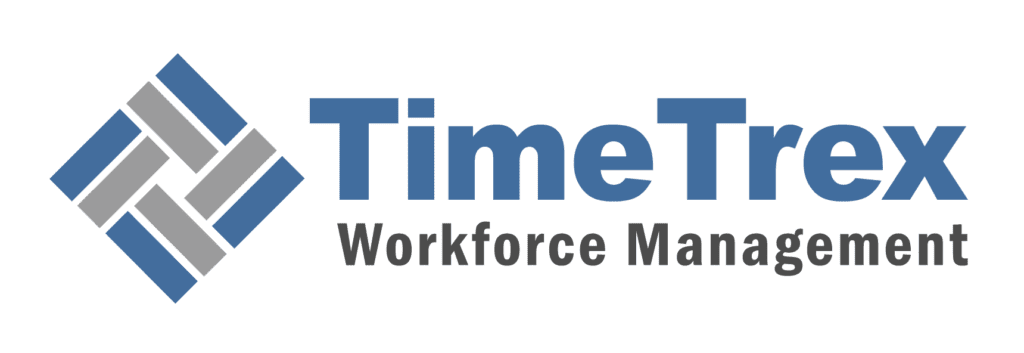
Quick Guide to Payroll Abbreviations
Understanding the vast world of payroll abbreviations, payroll acronyms, and specialized pay stub codes is essential for any professional in HR, finance, or business management. From foundational concepts like FICA and YTD to global terminology like PAYG and STP, this comprehensive guide deciphers the complex language of payroll. Mastering these terms is crucial for ensuring accuracy, maintaining legal compliance, and managing employee compensation effectively. This article provides a detailed glossary and contextual analysis of over 500 essential payroll terms to help you navigate this intricate field with confidence.
TL;DR: The Indispensable Guide to Payroll Terminology
Payroll has become a complex discipline at the intersection of law, HR, and finance, filled with a confusing array of abbreviations, acronyms, and codes. This guide demystifies over 500 essential payroll terms by organizing them into logical categories: foundational concepts, U.S. taxes, employee benefits, legal compliance, global variations, and internal systems. It provides context from agencies like the IRS, SSA, CRA (Canada), and ATO (Australia). Understanding this terminology is not just administrative—it's a critical component of risk management, operational efficiency, and legal compliance in today's dynamic business environment. This article serves as a strategic resource for payroll professionals, HR managers, and anyone needing to decode the language of payroll.
Article Index
- Introduction: Navigating the Acronym-Laden World of Payroll
- Part I: Foundational Payroll Concepts and Paycheck Terminology
- Part II: Statutory & Tax-Related Abbreviations (U.S. Focus)
- Part III: Employee Benefits & Retirement Planning
- Part IV: Compliance, Legal, and Wage Garnishment
- Part V: Global Payroll Terminology & Regional Variations
- Part VI: Technology, Systems, and Internal Processes
- Part VII: Comprehensive Master Glossary
- Part VIII: Strategic Insights & Recommendations
- Streamline Your Payroll with TimeTrex
Introduction: Navigating the Acronym-Laden World of Payroll
The modern payroll function is a sophisticated system that integrates disparate data streams to ensure accurate and timely compensation. The proliferation of specialized abbreviations is a direct consequence of this complexity, reflecting a professional language that is concise but often opaque to those outside the field. A thorough understanding of this terminology is not merely an administrative convenience; it is a critical component of risk management and strategic human capital management. Misinterpreting a single acronym, particularly in a multinational context, can lead to compliance failures, financial penalties, and operational disruptions.
This guide is designed to demystify this technical language by providing a structured, authoritative reference. For an even more extensive list, you can also use the TimeTrex Payroll Acronym & Abbreviation Finder. Our approach is built on a fundamental observation about how payroll abbreviations function: they exist in a hierarchical structure. At the most fundamental level are abbreviations for national-level bodies and legislation, like IRS and FICA. Building on this are terms for specific programs and benefits like FSA and 401(k). A more granular layer consists of codes used on pay stubs, such as YTD or OT. This report is structured to reflect this layered reality, providing a deeper understanding of how the entire payroll ecosystem is interconnected.
Part I: Foundational Payroll Concepts and Paycheck Terminology
This section establishes a baseline understanding of the most common and universally applicable terms that appear on virtually every pay stub and in core payroll discussions. These terms are the building blocks for comprehending all subsequent, more specialized categories.
Earnings and Compensation Codes
Gross, or Gross Pay, represents the total amount of money an employee has earned before any deductions. Conversely, Net, or Net Pay, is the final "take-home pay" an employee receives after all deductions. For tracking totals over time, YTD (Year-to-Date) provides a cumulative figure for earnings, taxes, and deductions from the start of the year.
Pay is often divided into categories. Reg Pay (Regular Pay) is the standard wage for regular hours, while OT (Overtime Pay) is for hours worked beyond the standard workweek, governed by the Fair Labor Standards Act (FLSA). Paid leave is represented by codes like PTO (Paid Time Off), VAC (Vacation Pay), and SICK (Sick Pay). Other common codes include Hol (Holiday Pay), BONUS, and COMM (Commissions).
Employee & Pay Run Identifiers
A pay stub includes crucial administrative identifiers. The SSN (Social Security Number) is the unique 9-digit taxpayer ID. The EIN (Employer Identification Number) is the business's federal tax ID. The PAY DATE is when the check is issued, and the PAY PERIOD specifies the dates covered. Additional codes may include EMP ID (Employee ID), DEPT (Department), and LOC (Location).
Part II: Statutory & Tax-Related Abbreviations (U.S. Focus)
This section examines the legal and regulatory framework of U.S. payroll, focusing on the abbreviations for federal and state taxes and the agencies that govern them.
Federal Tax Acronyms
The cornerstone of U.S. payroll deductions is FICA (Federal Insurance Contributions Act), which funds Social Security and Medicare. It's often broken down into FICA/SS (Social Security) and FICA/MT or MED (Medicare). Federal income tax is denoted by Fed, FIT (Federal Income Tax), or FWT (Federal Withholding Tax). Another key employer-paid tax is FUTA (Federal Unemployment Tax Act), which funds state unemployment systems. For tax payments, businesses often use the EFTPS (Electronic Federal Tax Payment System).
Key Regulatory Bodies
Several government agencies oversee these laws. The IRS (Internal Revenue Service) is the primary tax collection agency. The SSA (Social Security Administration) manages Social Security and Medicare. The DOL (Department of Labor) is responsible for labor laws, including the FLSA.
State & Local Jurisdictions
Payroll must also comply with state and local laws. SIT (State Income Tax) or SWT (State Withholding Tax) are common codes for state-level income tax. SUI (State Unemployment Insurance) is a state-funded benefit, and in some areas, SDI (State Disability Insurance) is a mandatory deduction. Local taxes may appear as LOCAL.
Part III: Employee Benefits & Retirement Planning
This section focuses on the pre-tax and post-tax deductions that fund employee benefits and retirement savings, which are a critical component of an employee's total compensation.
Healthcare & Insurance
A FSA (Flexible Spending Account) is a pre-tax account for medical or dependent care, but it has a "use it or lose it" rule. An HSA (Health Savings Account) is available to employees with a HDHP (High-Deductible Health Plan) and allows unused funds to roll over. An HRA (Health Reimbursement Arrangement) is an employer-funded plan. Insurance deductions are often specific, such as MED (Medical), DEN (Dental), and VIS (Vision), or broader, like AD&D (Accidental Death and Dismemberment) and GTL (Group Term Life).
Retirement & Pensions
The 401(k) is the most common employer-sponsored retirement plan. Similar plans include the 403(b) for non-profits and the 457 Plan for government employees. An IRA (Individual Retirement Account) is a personal savings plan. For federal employees, the TSP (Thrift Savings Plan) is the designated retirement option.
Disability & Leave Programs
Income protection plans include STD (Short-Term Disability) and LTD (Long-Term Disability). The FMLA (Family and Medical Leave Act) provides job-protected, unpaid leave for specified family and medical reasons. A general term for approved time off is LOA (Leave of Absence).
Part IV: Compliance, Legal, and Wage Garnishment
This section covers the legal and administrative aspects of payroll, including key federal legislation and mandatory post-tax deductions.
Federal & State Legislation
Key laws dictating payroll administration include the FLSA (Fair Labor Standards Act), which sets wage and overtime standards, and the ACA (Affordable Care Act), which has significant reporting requirements. ERISA (Employee Retirement Income Security Act) sets standards for retirement and health plans. Professionals must also be aware of HIPAA (Health Insurance Portability and Accountability Act) for privacy rules and USERRA (Uniformed Services Employment and Reemployment Rights Act) for protecting military service members' jobs.
Mandatory Deductions & Levies
Certain deductions are legally mandated post-tax. Garn (Wage Garnishment) is a legal procedure to withhold wages for a debt. This includes CHD SU (Child Support) and a TX Levy or IRS Levy to collect owed taxes. Other post-tax deductions can include UNION (Union Dues) and StdnLoan (Student Loan) payments.
Part V: Global Payroll Terminology & Regional Variations
A single set of U.S.-centric abbreviations is insufficient for multinational operations. This section addresses the crucial nuances of international payroll, demonstrating that legal frameworks and terminology vary significantly by jurisdiction.
Canadian Payroll
In Canada, the CRA (Canada Revenue Agency) is the federal tax agency. Mandatory programs include the CPP (Canada Pension Plan) and EI (Employment Insurance). Quebec has its own QPP (Québec Pension Plan) and QPIP (Québec Parental Insurance Plan). The employee identifier is the SIN (Social Insurance Number), and a key document is the ROE (Record of Employment).
Australian Payroll
Australia's system is governed by the ATO (Australian Taxation Office). The tax withholding system is PAYG (Pay As You Go). A cornerstone of employment is Super (Superannuation), a mandatory retirement savings system. A key development is STP (Single Touch Payroll), which mandates real-time reporting of payroll information to the ATO.
United Kingdom Payroll
The UK's tax withholding system is also called PAYE (Pay As You Earn)—a critical point of ambiguity, as this acronym has a different, specific meaning in some U.S. federal systems. The social security system is NIC (National Insurance Contributions), identified by a NINO (National Insurance Number). Employers report this to HMRC (Her Majesty's Revenue and Customs) via the RTI (Real Time Information) system.
Multinational Concepts
An EOR (Employer of Record) or GEO (Global Employment Organization) acts as the legal employer in a foreign country. Companies may use a GSOR (Global System of Record) to unify HR data, often managed through an SSC (Shared Services Center).
Part VI: Technology, Systems, and Internal Processes
This section explores the abbreviations related to the software, databases, and administrative processes that enable modern payroll to function.
Financial & Processing Systems
The ACH (Automated Clearing House) is the electronic network for direct deposits, a type of EFT (Electronic Funds Transfer). Work hours are often captured by a T&A (Time and Attendance) system, which is a core feature of platforms like TimeTrex.
HR & Enterprise Systems
Payroll data is typically managed by a HRIS (Human Resources Information System) as part of a broader HCM (Human Capital Management) strategy. The primary database where employee data resides is the SOR (System of Record). Companies can also outsource these functions to a PEO (Professional Employer Organization).
Internal Codes & Processes (Case Study)
Many organizations have proprietary codes. For example, the USDA's National Finance Center uses internal codes like PINE (Personnel Input and Edit System) and ADJP (Adjustment Processing System). This highlights the need for payroll professionals to learn both universal and system-specific terminology.
Part VII: Comprehensive Master Glossary
| Abbreviation | Full Term / Meaning | Category | Contextual Notes |
|---|---|---|---|
| 401(k) | Employer-sponsored retirement plan | U.S. Benefits | Contributions are often pre-tax, reducing taxable income. |
| 403(b) | Retirement plan for public schools and non-profits | U.S. Benefits | Similar to a 401(k). |
| 457 | Deferred compensation plan for government employees | U.S. Benefits | . |
| ABN | Australian Business Number | Australia | A unique identifier for businesses. |
| ACA | Affordable Care Act | U.S. Compliance | Healthcare reform law impacting reporting requirements. |
| ACH | Automated Clearing House | U.S. Technology | Electronic network for financial transactions. |
| AD&D | Accidental Death and Dismemberment | U.S. Benefits | A form of insurance. |
| ADJP | Adjustment Processing System | USDA/NFC System | A system for payroll adjustments. |
| ATO | Australian Taxation Office | Australia | The tax collection agency in Australia. |
| BONUS | Bonus Pay | Earnings | Compensation tied to performance or role. |
| CHD SU | Child Support | Post-Tax Deductions | Court-ordered payments for child support. |
| COMM | Commissions | Earnings | Earnings based on sales or performance metrics. |
| CPP | Canada Pension Plan | Canada | Mandatory social insurance program. |
| CRA | Canada Revenue Agency | Canada | Federal tax agency. |
| DEN | Dental Insurance | Benefits | Code for dental insurance deduction. |
| DEPT | Department | Pay Stub | Employee's department. |
| DOL | Department of Labor | U.S. Agency | Responsible for labor laws, including the FLSA. |
| EFT | Electronic Funds Transfer | Technology | Generic term for the electronic transfer of money. |
| EFTPS | Electronic Federal Tax Payment System | U.S. Technology | Online system for paying federal taxes. |
| EI | Employment Insurance | Canada | Provides temporary income to unemployed workers. |
| EIN | Employer Identification Number | U.S. Compliance | 9-digit number issued by the IRS for tax reporting. |
| EOR | Employer of Record | Global Payroll | Service that acts as a legal employer in a foreign country. |
| ERISA | Employee Retirement Income Security Act | U.S. Compliance | Federal law for retirement and health plans. |
| Fed | Federal Income Tax | U.S. Tax | Federal tax withheld from wages. |
| FICA | Federal Insurance Contributions Act | U.S. Tax | Funds Social Security and Medicare. |
| FIT/FITW | Federal Income Tax/Withholding | U.S. Tax | Alternate codes for federal income tax. |
| FLSA | Fair Labor Standards Act | U.S. Compliance | Defines minimum wage and overtime rules. |
| FMLA | Family and Medical Leave Act | U.S. Compliance | Provides job-protected leave. |
| FSA | Flexible Spending Account | U.S. Benefits | Pre-tax account for medical/dental expenses, use it or lose it. |
| FUTA | Federal Unemployment Tax Act | U.S. Tax | Employer-paid tax for unemployment. |
| FWT | Federal Withholding Tax | U.S. Tax | See FIT/FITW. |
| Garn | Garnishment | Post-Tax Deductions | Withholding for a legal debt. |
| Gross | Gross Pay | Earnings | Total pay before deductions. |
| GSOR | Global System of Record | Global Tech | A single, unified HR system for a global enterprise. |
| GTL | Group Term Life Insurance | U.S. Benefits | A type of life insurance offered by employers. |
| HDHP | High-Deductible Health Plan | U.S. Benefits | Health plan required to be eligible for an HSA. |
| HMO | Health Maintenance Organization | U.S. Benefits | A type of managed care health plan. |
| Hol | Holiday Pay | Earnings | Payment for public holidays. |
| HRA | Health Reimbursement Arrangement | U.S. Benefits | Employer-funded reimbursement for medical expenses. |
| HRIS | Human Resources Information System | HR/Tech | Software for managing HR processes. |
| HSA | Health Savings Account | U.S. Benefits | Pre-tax account for medical expenses that rolls over. |
| IRA | Individual Retirement Account | U.S. Benefits | A personal retirement savings account. |
| IRS | Internal Revenue Service | U.S. Tax | The federal tax agency. |
| LOA | Leave of Absence | HR/Admin | An approved period of time away from work. |
| LTD | Long-Term Disability | U.S. Benefits | Income protection for a long-term disability. |
| MED | Medicare Tax or Medical Insurance | U.S. Tax / Benefits | Can refer to the Medicare portion of FICA or a medical insurance deduction. Context is key. |
| Net | Net Pay | Earnings | The final take-home amount after all deductions. |
| NIC | National Insurance contributions | UK Tax | Mandatory social security contributions. |
| OASDI | Old-Age, Survivors, and Disability Insurance | U.S. Benefits | Official name for the Social Security program. |
| OT | Overtime Pay | Earnings | Pay for hours worked over the standard workweek. |
| PAYE | Pay As You Earn | UK Tax | UK's system for deducting income tax and NIC. (Note: different meaning in some US gov systems). |
| PAYG | Pay As You Go | Australia | System for withholding income tax. |
| PEO | Professional Employer Organization | HR/Admin | Outsourced HR and payroll solution. |
| PPO | Preferred Provider Organization | U.S. Benefits | A type of managed care health plan. |
| PTO | Paid Time Off | Leave | General term for paid leave, including vacation and sick days. |
| Reg Pay | Regular Pay | Earnings | Standard hourly wage for hours worked. |
| ROE | Record of Employment | Canada | Document issued upon an interruption of earnings. |
| SDI | State Disability Insurance | U.S. Benefits | State-mandated deduction for short-term disability. |
| SIT/SWT | State Income Tax/State Withholding Tax | U.S. Tax | State-level income tax. |
| SIN | Social Insurance Number | Canada | Unique 9-digit identifier for employees in Canada. |
| SS | Social Security Tax | U.S. Tax | The portion of FICA for Social Security. |
| SSA | Social Security Administration | U.S. Agency | Administers Social Security and Medicare programs. |
| STP | Single Touch Payroll | Australia | Real-time reporting to the ATO with each pay run. |
| STD | Short-Term Disability | U.S. Benefits | Income protection for a temporary disability. |
| SUI | State Unemployment Insurance | U.S. Tax | State-provided unemployment benefits. |
| T&A | Time and Attendance | HR/Admin | System for tracking employee work hours. |
| TFN | Tax File Number | Australia | A unique identifier for taxation. |
| TSP | Thrift Savings Plan | U.S. Benefits | Retirement plan for federal employees. |
| TX Levy | Tax Levy | Post-Tax Deductions | A levy on wages by a tax authority. |
| VAC | Vacation Pay | Earnings | Pay for vacation leave. |
| VIS | Vision Insurance | Benefits | Deduction for vision insurance premiums. |
| YTD | Year-to-Date | Earnings | Cumulative total of earnings and deductions from the start of the year. |
Part VIII: Strategic Insights & Recommendations
The preceding sections demonstrate that payroll abbreviations are a multi-layered system of communication defining the relationships between employees, employers, and government agencies. One significant challenge is terminological ambiguity, such as PAYE having different meanings in the U.S. and UK. A lack of clarity can lead to severe compliance risks. Therefore, the fundamental recommendation is to prioritize context over rote memorization.
A second profound shift is the move from periodic, form-based reporting to real-time, data-driven compliance. Systems like Australia's STP and the UK's RTI mandate that data be submitted with each pay run. This transition shifts the payroll professional's focus from manual calculations to data management and system integration. The expertise is less about reconciling paper forms and more about ensuring a GSOR is seamlessly integrated to serve as a "single source of truth."
In conclusion, mastering payroll language requires a tiered, contextualized approach. The strategic imperatives for the modern payroll professional are to manage ambiguity, embrace real-time data integration, and adapt to an increasingly analytical and technological role. This guide serves as a foundational tool for navigating that transition, providing the clarity needed to achieve operational excellence and legal compliance.
Ready to Simplify Your Payroll?
Decoding payroll abbreviations is just the first step. TimeTrex offers a comprehensive, all-in-one solution that integrates Time & Attendance, Scheduling, HR, and Payroll into a single platform. Stop juggling complex systems and ensure accuracy and compliance with our powerful, easy-to-use software. Discover how TimeTrex can transform your payroll management today.
Explore TimeTrex Payroll ManagementDisclaimer: The content provided on this webpage is for informational purposes only and is not intended to be a substitute for professional advice. While we strive to ensure the accuracy and timeliness of the information presented here, the details may change over time or vary in different jurisdictions. Therefore, we do not guarantee the completeness, reliability, or absolute accuracy of this information. The information on this page should not be used as a basis for making legal, financial, or any other key decisions. We strongly advise consulting with a qualified professional or expert in the relevant field for specific advice, guidance, or services. By using this webpage, you acknowledge that the information is offered “as is” and that we are not liable for any errors, omissions, or inaccuracies in the content, nor for any actions taken based on the information provided. We shall not be held liable for any direct, indirect, incidental, consequential, or punitive damages arising out of your access to, use of, or reliance on any content on this page.
About The Author

Roger Wood
With a Baccalaureate of Science and advanced studies in business, Roger has successfully managed businesses across five continents. His extensive global experience and strategic insights contribute significantly to the success of TimeTrex. His expertise and dedication ensure we deliver top-notch solutions to our clients around the world.
Time To Clock-In
Start your 30-day free trial!
Experience the Ultimate Workforce Solution and Revolutionize Your Business Today
- Eliminate Errors
- Simple & Easy To Use
- Real-time Reporting

Saving businesses time and money through better workforce management since 2003.
Copyright © 2025 TimeTrex. All Rights Reserved.
